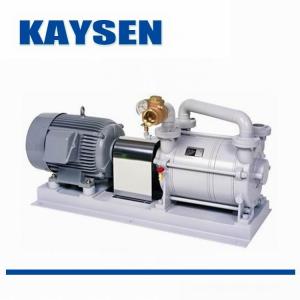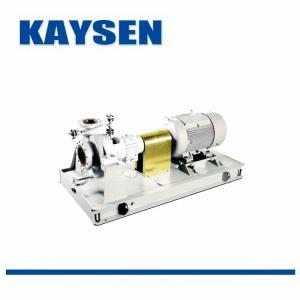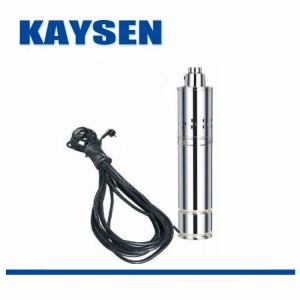
|
- 品牌:德国KAYSEN
- 货号:54845645
- 发布日期: 2019-10-15
- 更新日期: 2025-12-28
| 外型尺寸 | |
| 货号 | 54845645 |
| 品牌 | 德国KAYSEN |
| 用途 | 水、油、饮料、油漆、颜料、化工等等 |
| 型号 | KAYSEN |
| 工作压差 | 0 |
| 压力环境 | 常压 |
| 介质温度 | 250℃ |
| 驱动方式 | 电动 |
| 适用介质 | 水 |
塑料电动隔膜泵(原装)隔膜泵
Made in Germany
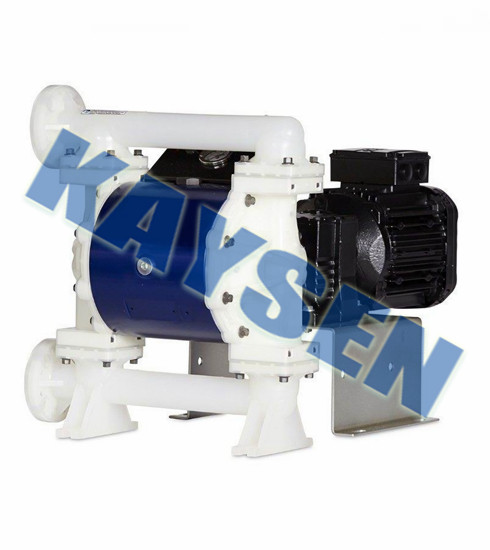
KAYSEN订货要求:
1. Shipment Style: By Truck. 运输方式:陆运。
2. Delivery Time: Goods will be ready for delivery within 1weeks after receipt of 100% payment.
发货时间:货物将在收到 100%货款后 1 周内发运。
3. Payment Terms: 30% down payment by T/T within 1 week after order.
款:合同签订后 1 周内电汇支付 30%货款。
4. Beneficiary of Contract: Camp Faction Valve (Shanghai) Co., Ltd.
合同受益人:营派阀门(上海)有限公司。
5. Price Basis: Price quoted above is in RMB.
报价说明:上述所报的价格单位为*元。
6. Jobsite Service: None. 现场服务:无。
7. Standard & Method of Inspection& Acceptance: According to the packing list and cargo acceptance,
if any objections, must be presented within one week after arrival.
验收标准和方法:按照装箱单和货物外观验收,若有异议须在到货后壹周内提出。

KAYSEN凯森塑料电动隔膜泵概述
塑料电动隔膜泵,凯森采用摆线针轮减速机传动,通过曲轴滑块机构带动双隔膜作往复运动,使工作腔容积发生交替变化从而达到将液体不断地吸入和排出。同时,近年来由于隔膜材质取得了突破性的进展,大大地延长隔膜的使用寿命,因此被越来越广泛地替代部分离心泵、螺杆泵来应用于石化、陶瓷、冶金等行业。
主要特点:
●不需灌引水,自吸能力达7米以。
●通过性能好,直径在10毫米以下的颗粒、泥浆等均可以毫不费力地通过。
●泵体介质流经部分,可根据用户要求,分为铸铁、不锈钢、铝合金,电机分为普通式和防爆式两种。
●由于隔膜将被输送介质和传动机械件分开,所以介质*不会向外泄漏。且泵本身无轴封,使用寿命大大延长。根据不同介质,隔膜可分为氯丁橡胶、丁晴橡胶、氟橡胶、四氟等,完全可以满足不同客户的要求。
主要应用:
●泵吸泡菜果酱、土豆泥、巧克力等。
●泵吸油漆、树胶、颜料粘合剂。
●用泵为油轮驳船清仓吸取仓内污水及剩油。
●作为各种压滤机前级送压装置。
●热水回收及循环。
●油罐车、油库、油品装卸。
●啤酒花及发酵粉稀浆、糖浆、糖蜜。
●泵吸矿井、坑道、隧道、下水道中污水、沉淀物。
●各种瓷器釉浆、水泥灌浆、灰浆、泥浆。
●各种橡胶浆乳胶、有机溶剂、填料。
●各种特殊介质的吸送。
●各种剧毒、易燃、易挥发液体。
●各种强酸、强碱、强腐蚀液体。
●可输送较高温度的介质150℃。
KAYSEN技术团队
Made in Germany
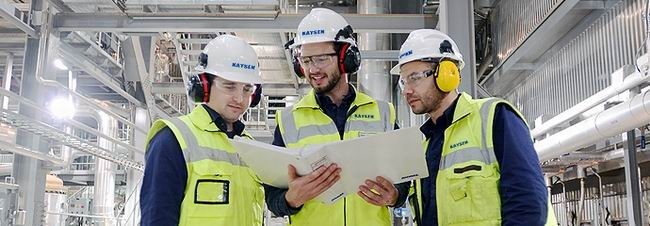
泵维护:保持泵送
执行预防性维护有助于防止泵停机
一台可靠的泵在工作正常时并没有得到真正的赞赏,但是如果泵的性能下降或更糟,那么可靠性就会被错过,机组就会停止工作。为避免泵停机和随后的头痛,必须遵守预防性维护计划。
如果您将泵作为租赁库存的一部分,下面介绍如何确保您的泵在您的客户需要它们时准备好,以及您的客户需要做些什么来保持泵正常运行。
· 每天开始泵检查。最重要的日常检查之一是发动机油的质量和水平。受污染的油可能会导致严重的问题,并会降低发动机的使用寿命,同样,如果发动机数量不足。根据制造商的建议更换机油或根据需要添加,以达到水平。
检查汽油水平,确保油箱已满或至少足够满足当天的使用。另外,请查找任何燃油或机油泄漏的证据。如果液体滴落,请检查该区域是否有可能需要拧紧或更换的部件。
清洁或更换空气过滤器是另一个可以防止管道严重损坏的重要做法。堵塞,潮湿,肮脏或损坏的空气过滤器可能会导致动力损失,并通过允许污垢或水进入敏感区域来缩短发动机的使用寿命。泡沫过滤器可以清洁和重复使用,所以每天检查一下就可以了。另一方面,纸质空气过滤器在拆卸时应始终进行更换。*按照推荐的时间表及时更换纸质空气过滤器。
定期检查软管的状况。如果它们磨损,磨损或有任何漏洞,则气隙可能会导致泵失去吸力。修补任何孔并密封泄漏的接头。应该更换严重磨损的软管。*,检查机器的其余部分是否有损坏的螺栓,螺母或松动的部件。
在所有的手术前检查中,日常维护中最重要的事情可能就是在开始之前启动泵。运行干燥的泵会损坏密封件,导致更多问题的连锁反应。如果是自吸泵,只需加水即可。术语“自吸”有点用词不当,因为每次使用时必须将水添加到泵中。然后泵将接管,在蜗壳内建立压力并开始排放。一旦泵已经准备好了,就可以开始工作了。
· 除日常检查外,泵还需要其他维护检查和服务。虽然这些项目不需要每天完成,但它们对泵的使用寿命至关重要,并应定期按计划进行。一般来说,优质泵引擎可以运行长达2500小时,并且按照推荐的维护计划只能增加这个时间和泵的投资回报。
有几件事情需要每月检查几次,其他事件则更少。例如,纸质空气过滤器应每月更换一次。虽然泡沫过滤器可以清洗并重新使用,但每月更换一次仍然是个好主意。
肮脏的火花塞会导致功率降低和起动性能差,因此应每半个月检查一次火花塞是否有灰尘,损坏或积碳过多。用钢丝刷或火花塞清洁器清洁火花塞。立即更换任何火花塞与裂纹瓷。
此外,每个月清洁并检查燃油滤网和燃油滤清器非常重要。燃油在运行过程中可能会被污染,如果未清除,可能会导致发动机启动时出现问题。更换燃油管和化油器价格昂贵,因此必须防止受污染的燃油造成不必要的损坏。
每年都要对泵进行彻底检查,检查是否有肮脏,破损或未对齐的部件。这些部件可能会导致发动机或泵部件出现问题。检查整台机器可以*地了解需要清洁和修理的部件。
值得注意的是,灰尘状况通常会缩短正常服务之间的时间长度,因为*的灰尘会堵塞过滤器元件或污染燃料和机油。
根据泵的环境,可能需要调整维护计划以适应低于*条件。
· 故障排除提示。知道如何寻找并快速解决问题将会使问题变得更加昂贵,耗时的维修。即使有定期的,适当的预防性维护计划,泵仍然可能会遇到问题。这很不幸,但很常见。
如果一台泵根本不能运转,罪魁祸首可能是叶轮或发动机。如果叶轮粘住,只需拆开它,清洁并重新安装。至于引擎,几种不同的东西可能会影响它并阻止它启动。
首先要检查的是火花塞。如果它很脏,请清洁它。如果它损坏了,请更换它。如果它干净无损,请将其连接到插头盖并将插头与发动机机身接地。拉起动器,看看火花是否微弱或不存在。如果新插头没有点燃,则点火系统有故障,需要维修。
如果火花塞松动或插头浸湿燃油,发动机也可能无法启动。如果火花塞是潮湿的,请检查燃油旋塞是否关闭。如果是这样,关闭阻风门拉杆并拉动起动手柄6次,看电极是否变湿。如果是这样,问题可能是燃料已经陈旧,在这种情况下应该排空并重新注入新鲜的燃料。如果电极干燥,问题可能与化油器的燃料吸入有关。试着看看燃油停在发动机的哪里。
其他一些事情可能会阻止泵自吸。开始检查泵吸入侧的空气,并根据需要拧紧吸入软管或管道。检查排水塞,确保它完全拧紧。泵壳内的水不足也会阻止泵启动。
发动机转速也会影响泵送量。如果泵送量下降,请检查叶轮的磨损情况,查看吸入软管是否过薄或过长,或是重新拧紧吸入腔上的任何松动部件。这也可能是由于需要降低高吸力,水通道漏水,机械密封损坏或发动机输出功率或速度下降造成的。
采取积极主动的预防措施,确保重要的维护服务不会被忽视,防止泵停机,时间浪费,维修成本增加等问题造成的多米诺骨牌效应。这很简单直接 - 泵的维护现在意味着更少的问题。
遵循良好的维护计划(例如上述步骤)是保持泵流动的*途径。
Pump maintenance: Keep it pumping
Performing preventative maintenance helps prevent pump downtime
A dependable pump isn’t truly appreciated when it’s working properly, but that dependability is really missed if a pump’s performance declines or worse, the unit stops working altogether. To avoid pump downtime and subsequent headaches, a preventative maintenance program must be followed.
If you carry pumps as part of your rental inventory, here’s how to make sure your pumps are ready to go when your customers need them and what your customers need to do to keep pumps running properly.
· Start each day with a pump inspection. Among the most important daily checks is the quality and level of engine oil. Oil that’s contaminated can cause serious problems and decrease the life of an engine, likewise if there’s an insufficient amount of it. Change the oil or add if necessary to reach the level as per the manufacturer’s recommendation.
Check the gasoline level as well, making sure the tank is full or at least full enough for the day’s usage. Also, look for any evidence of fuel or oil leaks. If a fluid is dripping, inspect the area for any parts that may need to be tightened or replaced.
Cleaning or changing the air filter is another important practice that can prevent significant damage down the pipeline. A clogged, wet, dirty or damaged air filter can lead to a loss in power and shorten the life of an engine by allowing dirt or water into sensitive areas. A foam filter can be cleaned and reused, so it’s fine to check daily. A paper air filter, on the other hand, always should be replaced upon removal. It’s best to follow a recommended schedule to replace paper air filters in a timely fashion.
Inspect the condition of the hoses regularly as well. If they are worn, frayed or have any holes, the air gaps likely will cause the pump to lose suction. Patch any holes and seal leaking joints. A severely worn hose should be replaced. Finally, check the rest of the machine for broken bolts, nuts or loose parts.
Of all the pre-operation checks, perhaps the most important thing to remember for daily maintenance is priming the pump before starting. Running a pump dry will damage the seals, causing a chain reaction of further problems. If it’s a self-priming pump, simply add water. The term “self-priming” is somewhat of a misnomer, as water must be added to the pump each time it is used. The pump will then take over, build pressure within the volute and begin discharging. Once the pump has been prepped, it’s ready to go to work.
· In addition to daily checks, a pump requires other maintenance checks and services. While these items don’t need to be done daily, they are crucial to the pump’s life and should be kept up with on a regular schedule. Generally, quality pump engines can operate up to 2,500 hours, and following recommended maintenance schedules can only increase that time and the pump’s return on investment.
A few things need to be checked a couple of times a month, others even less frequently. For instance, a paper air filter should be changed monthly. Although a foam filter can be cleaned and re-used, it’s still a good idea to change it monthly.
Dirty spark plugs can cause a decrease in power and poor starting performance, so the spark plugs should be checked semimonthly for dirt, damage or excessive carbon build-up. Clean spark plugs with a wire brush or spark plug cleaner. Immediately replace any spark plugs with cracked porcelain.
In addition, it is important to clean and inspect the fuel strainer and fuel filter every month. Fuel can become contaminated during operation and, if it’s not removed, can lead to trouble with engine starts. Replacing the fuel line and carburetor is expensive, so it is essential to prevent unnecessary damage caused by contaminated fuel.
On an annual basis, give the pump a thorough inspection for dirty, broken or misaligned parts. Such parts can cause problems with the engine or pump components. Inspecting the entire machine gives the most comprehensive view of what needs to be cleaned and repaired.
It’s also worth noting that dusty conditions typically shorten the length of time between regular services, as extreme dust can clog filter elements or contaminate fuel and oil.
Depending on the pump’s environment, maintenance schedules may need to be adjusted to accommodate for less-than-optimal conditions.
· Tips for troubleshooting. Knowing what to look for and addressing it quickly will keep problems from turning into more expensive, time-intensive repairs. Even with a regular, proper preventative maintenance program, pumps still may experience problems. This is unfortunate, but common.
If a pump simply won’t run, the culprit is likely the impeller or engine. If the impeller is sticking, simply disassemble it, clean and reinstall. As for the engine, several different things could affect it and prevent it from starting.
The first thing to check is the spark plug. If it’s dirty, clean it. If it’s damaged, replace it. If it’s clean and damage-free, connect it to the plug cap and ground the plug against the engine body. Pull the starter to see if the spark is weak or nonexistent. If a new plug doesn’t spark, the ignition system is faulty and will need repairs.
The engine also might not start if the spark plug is loose or if the plug is wet with fuel. If the spark plug is wet, check to see that the fuel cock is closed. If so, close the choke lever and pull the starter handle a half-dozen times to see if the electrode becomes wet. If so, the problem may be that the fuel is stale, in which case it should be drained and refilled with fresh fuel. If the electrode is dry, the problem may be with the fuel intake of the carburetor. Try to see where the fuel stops in the engine.
A number of other things could prevent a pump from self-priming. Start by checking the air on the suction side of the pump and tighten the suction hose or pipe, if needed. Check the drain plug as well, to ensure that it has been tightened completely. Insufficient water inside the pump casing also will prevent the pump from priming.
Engine speed also can affect pumping volume. If the pumping volume has dropped, check the wear on the impeller, see if the suction hose may be too thin or too long, or retighten any loose parts on the suction chamber. This also might be caused by a high suction lift that would need to be lowered, water leaking from the water passage, a broken mechanical seal or a drop in engine output or speed.
Adopting a proactive preventative approach ensures that crucial maintenance services won’t be neglected, preventing a domino-effect of problems as the pump goes down, time is lost and repair costs add up. It’s simple and straightforward — pump maintenance now will mean fewer issues later.
Following a good maintenance program, such as the steps detailed above, is among the best ways to keep a pump flowing.

位于Schw?bischGmünd的凯森Kaysen泵业有限公司是*的各种流体水泵和隔膜泵制造商之一。60多年来,凯森以“制造”的可靠性和质量达到了*标准。凭借我们全面的产品组合,我们支持世界各地的客户成功掌握供水,采矿,工业,化工,造纸,电力,食品,制药,污水和海上行业的苛刻抽水任务。作为上述领域创新技术的*供应商,我们是液体需要安全,高效和经济运输的*合作伙伴。
凯森始终坚持“重质量,讲信誉”为宗旨。产品现畅销全国各地,并已逐步开发海外市场。公司多次被评为“重合同讲信用”企业,深得用户的信赖和广泛的赞誉。
The Kaysen Pumps GmbH in Schw?bischGmünd, Germany, is one of the world's leading manufacturers of fluid centrifugal pumps and diaphragm pumps. For more than 60 years, Kaisen has achieved the highest standards of reliability and quality of "Made in Germany". With our comprehensive product portfolio, we support customers around the world to successfully grasp the harsh pumping tasks of water supply, mining, industry, chemical, paper, electricity, food, pharmaceutical, sewage and marine industries. As a leading provider of innovative technology in these areas, we are the perfect partner for liquids to be safe, efficient and economical to transport. ,
Germany Kaysen always adhere to the "quality, stresses credibility" for the purpose. Products are selling all over the country, and has gradually developed overseas markets. The company has repeatedly been rated as "the contract with the letter" business, won the trust of users and extensive praise.
塑料电动隔膜泵(原装)隔膜泵
Made in Germany





